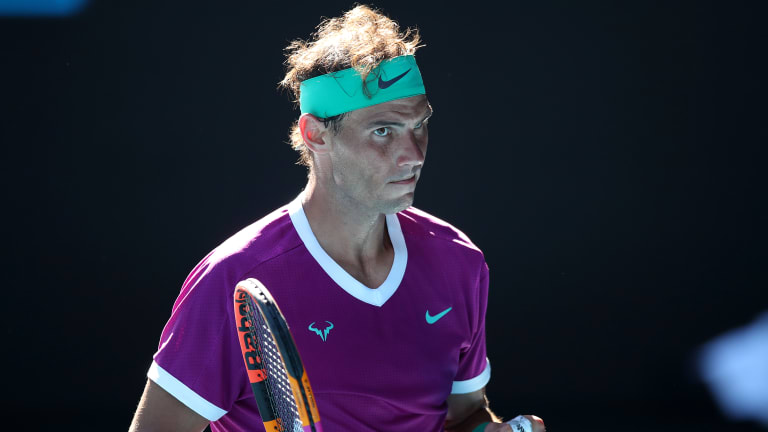Australian Open
“A little bit of miracle”: the Australian Open quarterfinals have been Rafael Nadal's waterloo, but he survived disaster against Denis Shapovalov
By Jan 25, 2022Australian Open
Roger Federer to headline “Battle of the World No.1s” at Australian Open’s inaugural Opening Ceremony
By Dec 11, 2025Australian Open
Australia at Last: Reflections on a first trip to the AO
By Jan 29, 2025Australian Open
Alexander Zverev must elevate his game when it most counts—and keep it there
By Jan 27, 2025Australian Open
Jannik Sinner draws Novak Djokovic comparisons from Alexander Zverev after Australian Open final
By Jan 26, 2025Australian Open
Alexander Zverev left to say "I'm just not good enough" as Jannik Sinner retains Australian Open title
By Jan 26, 2025Australian Open
Jannik Sinner is now 3-0 in Grand Slam finals after winning second Australian Open title
By Jan 26, 2025Australian Open
Taylor Townsend and Katerina Siniakova win second women's doubles major together at the Australian Open
By Jan 26, 2025Australian Open
Madison Keys wins her first Grand Slam title at Australian Open by caring a little bit less
By Jan 25, 2025Australian Open
Henry Patten, Harri Heliovaara shrug off contentious first set to win Australian Open doubles title
By Jan 25, 2025“A little bit of miracle”: the Australian Open quarterfinals have been Rafael Nadal's waterloo, but he survived disaster against Denis Shapovalov
Rafa knows the struggle for a record-breaking 21st Grand Slam title has just begun.
Published Jan 25, 2022
Advertising
Advertising

For whatever reason, Rafa has experienced tremendous struggle in Melbourne. But he escaped today.
© Getty Images
Advertising
Advertising

Shapovalov felt Nadal was allowed too much time to recover between points, which he let the Spaniard and the umpire know.
© Getty Images